Authors:
ABSTRACT
Aim
This was to explore the caries development in the primary dentition in children aged 5 and later when they were 10, with
an emphasis on the caries increment according to type of teeth and surfaces.
Methods
The study was a prospective, longitudinal
survey where the children were examined in 1993 when they were 5 years of age (n=217) and re-examined in 1998 when they were 10
(n=186). Caries was examined clinically and with radiographs by calibrated dentists based on a caries diagnostic grading system from 0
to 5. Primary incisors were excluded from the registrations at 10 years of age, while teeth exfoliating during the period were included,
based on notes from the dental records.
Results
Intra- and inter-examiner reliability ranged from kappa 0.62 to 0.90. Dmfs at 5 years
was 5.4 (incisors included) and 7.4 at 10 years (incisors excluded, other exfoliated teeth included). The mean caries increment during
the age period showed no significant difference between children with and without caries at 5 years of age. Molar-approximal lesions
dominated the increment, and when such lesions were diagnosed at 5 years of age, there was an increased risk for more severe caries
(dentine lesions) during the period.
Conclusion
The caries increment in the primary dentition is considerable for the majority of
children during the age period 5-10 years. Even if a risk assessment based on the prevalence of approximal caries at 5 years of age
may be useful for deciding individual recall intervals, the results of this study seem to suggest frequent check-ups are needed for the
whole population.
PLUMX METRICS
Publication date:
Keywords:
Issue:
Vol.5 – n.4/2004
Page:
Publisher:
Cite:
Harvard: M. S. Skeie, M. Raadal, G. V. Strand, I. Espelid (2004) "Caries in primary teeth at 5 and 10 years of age: a longitudinal study", European Journal of Paediatric Dentistry, 5(4), pp194-202. doi:
Copyright (c) 2021 Ariesdue

This work is licensed under a Creative Commons Attribution-NonCommercial 4.0 International License.
